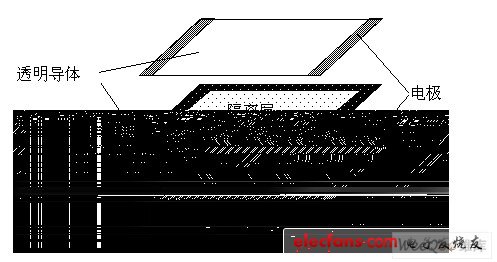Detailed introduction to the working principle of the four-wire resistive touch screen
Briefly introduce the structure and working principle of the touch screen, and take Burr-Brown's touch screen control chip ADS7843 as an example to introduce the typical circuit and operation of the touch screen application. Since the ADS7843 has a built-in 12-bit A / D, in theory, the input coordinate recognition accuracy of the touch screen is 1/4096 of the effective length and width.
1 Basic principle of touch screen
The working part of a typical touch screen is generally composed of three parts, as shown in Figure 1:

Two transparent resistive conductor layers, a separation layer between the two conductors, and electrodes. The resistive conductor layer is made of resistive material, such as indium tin oxide (ITO) coated on the substrate. The upper substrate is made of plastic, and the lower substrate is made of glass. The isolation layer is a viscous insulating liquid material, such as polyester film. The electrode is made of materials with excellent conductivity (such as silver powder ink), and its conductivity is about 1000 times that of ITO.
When the touch screen works, the upper and lower conductor layers are equivalent to a resistor network, as shown in Figure 2.

When voltage is applied to a layer of electrodes, a voltage gradient is formed across the network. If an external force causes the upper and lower layers to contact at a certain point, the voltage at the contact point can be measured at the other layer where no voltage is applied to the electrode, thereby knowing the coordinates at the contact point. For example, when a voltage is applied to the top electrode (X +, X-), a voltage gradient is formed on the top conductor layer. When an external force causes the upper and lower layers to contact at a certain point, the voltage at the contact point can be measured at the bottom layer Then, according to the distance relationship between the voltage and the electrode (X +), know the X coordinate of the place. Then, switch the voltage to the bottom electrode (Y +, Y-), and measure the voltage at the contact point on the top layer to know the Y coordinate.
Shenzhen Kaixuanye Technology Co., Ltd. , https://www.icoilne.com